Cardio workouts are essential for reclaiming vitality, sharpening focus, and building a foundation for lasting health.
They condition the heart, expand lung capacity, and ignite metabolic function. The variety of workouts, such as running, cycling, swimming, dancing, or brisk walking, can transform healthy journeys.
Cardio workouts also reduce stress hormones, elevate mood, and support restful sleep. Consistency is key, as the rhythm of cardio workouts conditions muscles and discipline over time. Tools like fitness trackers can help stay motivated and track progress.
Harvard Health recommends weekly moderate-intensity activity of 150 minutes or 75 minutes, or an equal combination of both, for optimal health.
Cardio workouts are not just exercise; they are self-preservation, health-boosting, and energy-reserving. Discover several types and strategies to make cardio workouts a routine and lifestyle.
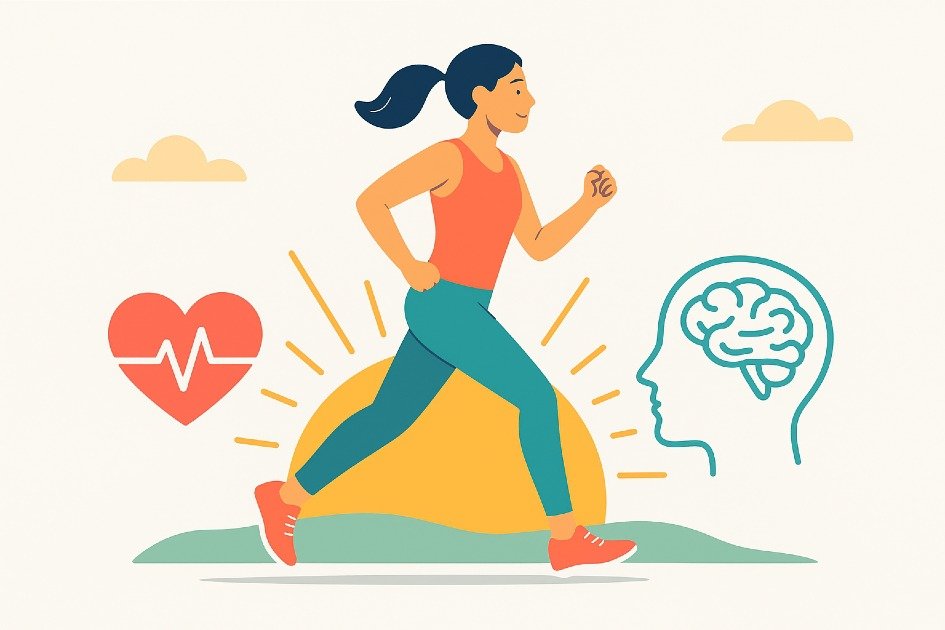
The Power of Cardio
Cardio workouts not only burn calories but also transform body function and mind, promoting lighter, clearer thinking, and longer life when done consistently.
Boosting Heart Health Naturally
Regular cardio workouts like walking, cycling, or swimming improve circulation, strengthen the heart, and reduce the risk of heart-related illnesses, preventing fatigue, high blood pressure, and cardiovascular disease.
Picture yourself climbing stairs without feeling out of breath, which is what cardio builds for you. With time, you will see your heartbeat calm down faster after exercise, a clear sign your heart is getting stronger.
I use smart heart rate monitors to track my workouts and stay motivated.
Strengthening Your Lungs and Endurance
Weak lung capacity can be improved by engaging in cardio workouts like interval running, rowing, or swimming, which challenge breathing patterns and increase lung capacity.
Many beginners notice stamina improves fast. With only a few weeks of steady training, daily chores feel easier, and energy lasts much longer.
I started with 10 minutes a day. As my breathing got better, I added more time. Even walking while talking felt like real training.
Supporting Mental Well-Being and Stress Relief
Cardio workouts can help manage stress, anxiety, and mood swings by releasing endorphins in the brain, which ease stress, improve focus, and regulate sleep patterns.
For many, Cardio wants to move meditation. It is not only about burning calories; it is a way to clear the mind while the body stays active.
Harvard Health highlights that regular aerobic exercise not only builds muscle and stamina but also boosts mood, eases depression, and improves memory and cognitive function.
Helping You Maintain Healthy Weight
Weight gain, often unnoticed due to busy schedules and processed foods, can stress joints, disrupt sleep, and increase chronic disease risk. Cardio workouts, like cycling, swimming, or dancing, help manage weight.
Just 15 minutes of jump rope or a quick walk after dinner can make a real difference. Many people lose weight steadily by combining simple cardio with mindful eating.
I track my progress with a fitness app that shows calories burned and keeps me on track. Small daily steps build my long-term success.
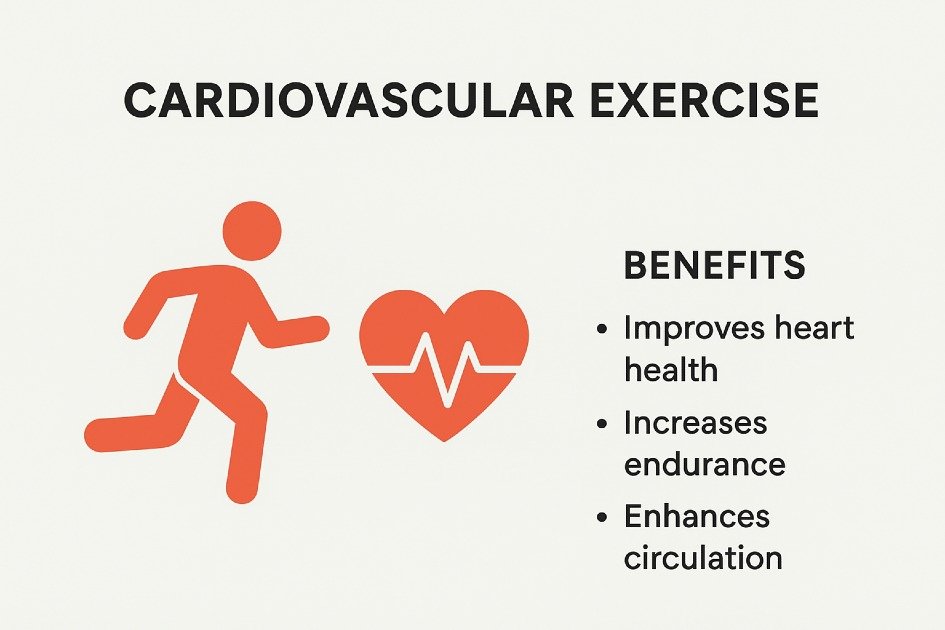
Breaking Down the Science of Cardio
Cardio workouts enhance health, stamina, and longevity by triggering powerful body changes, and understanding these workouts can help maintain motivation and consistency.
What Actually Happens to Your Heart During Cardio
Cardio workouts increase heart rate, pump blood, oxygen, and energy to muscles. Many people ignore heart health until fatigue or shortness of breath appear.
Regular cardio workouts like walking, cycling, or jogging strengthen the heart, allowing it to pump blood with less strain, resulting in easier daily tasks.
The Difference Between Aerobic and Anaerobic Activity
Cardio workouts are often categorized into aerobic and anaerobic types, leading to plateaus when individuals only stick to one type.
- Aerobic activities, such as jogging, swimming, and cycling, require oxygen to maintain energy levels for extended periods.
- Anaerobic activity, which means “without oxygen,” involves pushing the body to perform when oxygen supply is insufficient.
Alternating between aerobic runs and anaerobic sprints can enhance endurance and keep the body adaptable, while mastering these forms also reveals the fascinating role of oxygen in performance.
For me, mixing steady runs with quick sprints made training more fun and boosted my endurance faster than using one style. Learning how oxygen fuels both were eye-opening.
How Oxygen and Energy Production Fuel Performance
Oxygen plays a crucial role in cardio workouts, but overuse can lead to muscle exhaustion and soreness.
Pacing and conditioning are key to improving endurance, with gradually increasing intensity and consuming energy-supporting foods like bananas or oats to enhance the body’s oxygen utilization.
When I learned to control my breathing during runs, my stamina improved fast. Cardio workouts push the body to use oxygen, blood flow, and energy together. That is why steady breathing is key to lasting longer and feeling stronger.
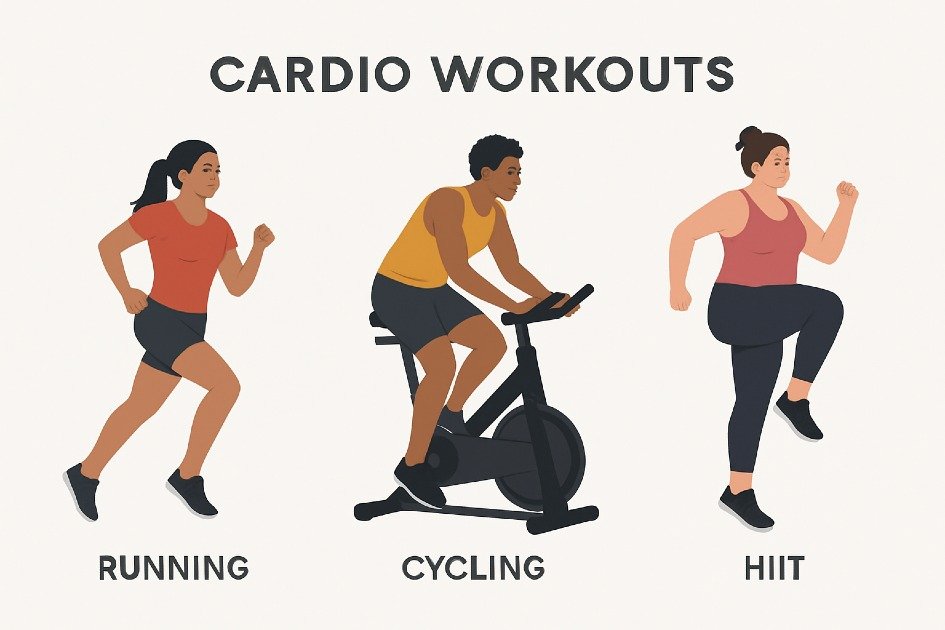
Types of Cardio Workouts You Can Try
Cardio workouts not only burn calories but also promote heart health, strengthen lungs, and improve stamina. They are versatile, suitable for all ages, fitness levels, and lifestyles, offering unique benefits.
Low-Impact Options for Beginners and Joint Health
Low-impact cardio exercises like walking, swimming, and elliptical trainers can help strengthen the heart without stressing joints, supporting circulation, boosting energy, and providing a gentle yet powerful workout.
Beginners benefit from daily walks, low-impact cardio, supportive sneakers, and home elliptical trainers for improved stamina, mood, and joint comfort, promoting confidence without overwhelming the body.
Moderate-Intensity Workouts for Steady Progress
Moderate-intensity cardio workouts like jogging, cycling, and rowing can help build endurance and burn calories.
Harvard Health suggests that vigorous aerobic exercise can enhance VO2 max, making it a beneficial activity for boosting heart rate.
Scheduled cardio like an appointment, like adding a 20-minute cycle ride before dinner, can lead to steady results. Indoor cycling bikes can also be beneficial for controlling resistance and tracking progress.
High-Intensity Cardio for Fast Results and Endurance
High-intensity cardio, such as High-Intensity Interval Training (HIIT), can be effective for maximizing results in minimal time, as it combines quick, explosive moves with short rest periods, boosting metabolism and fat burning.
Start small with HIIT workouts, gradually increasing intensity as fitness improves. Add variety with apps or jump ropes for an extra boost.
Fun Cardio Activities That Do Not Feel Like Exercise
People often dislike cardio workouts due to boredom, so finding enjoyable activities like weekly dance classes can help maintain motivation, weight loss, and social connections.
Harvard Health suggests that regular physical activity, such as walking, yoga, resistance training, and Pilates, can improve mood, alleviate depression and anxiety symptoms.
Dance workouts, hiking, and recreational sports like tennis and basketball offer fun, engaging cardio workouts that can be combined with physical activity.
When I make cardio part of my life, it changes more than my body—it boosts my energy, confidence, and how I see the world.
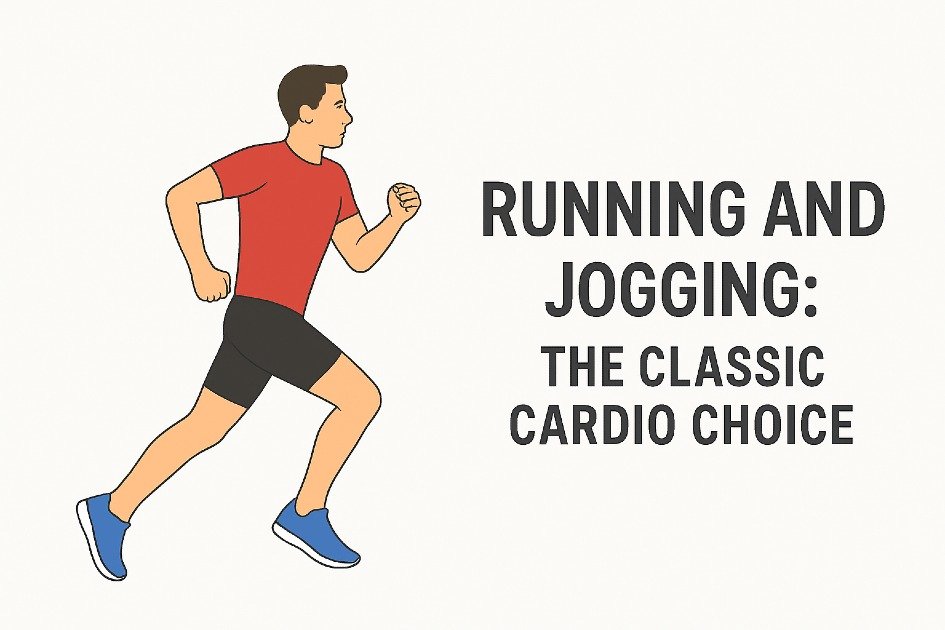
Running and Jogging: The Classic Cardio Choice
Running and jogging are popular cardio workouts for heart health, calorie burning, and mood boost. However, variations in form, pace, and environment can enhance results and reduce injury risk.
Choosing the Right Surface
Why it matters:
Concrete running can cause joint stress and knee or hip pain, while soft surfaces like grass or trails offer longer, more comfortable running.
How to do it:
- Try running on a treadmill, track, or trail to see what feels easiest and how far you can go.
- Build up your mileage slowly on soft surfaces to protect your joints.
- Pay attention to your body knowing that joint soreness is normal, but sharp pain means switch surfaces.
Proper Footwear
Why it matters:
The incorrect footwear can lead to health issues like blisters, plantar fasciitis, or shin splints, while proper footwear supports arches, cushions impact and promotes natural stride.
How to do it:
- Visit a local running store to find shoes that match your foot shape and running style.
- Swap your shoes every three hundred–five hundred miles to keep support and cushioning strong.
- Try supportive insoles for added comfort.
Posture and Form
Why it matters:
Poor posture can cause fatigue, inefficient stride, and injuries over time, while proper form maximizes energy use and maintains the effectiveness of cardio workouts.
How to do it:
- Stand tall with your chest open and shoulders loose.
- Keep your elbows slightly bent and swing your arms naturally.
- Land on your midfoot, not your heels, to lower impact and stay steady.
- Tighten your core gently to shield your lower back.
Pacing Strategies
Why it matters:
Running at a suitable pace ensures cardiovascular benefits without overexertion, as too fast or slow running can lead to burnout and limit calorie burn.
How to do it:
- Begin with a 5–10-minute walk or easy jog to warm up your muscles.
- Try the talk test: you should speak a few sentences comfortably while exercising.
- Start running slow, then speed up at the end to build stamina.
- Use a smartwatch or app to track progress and stay consistent.
Interval Training
Why it matters:
Short bursts of speed in jogging can significantly enhance calorie burn and cardiovascular efficiency, breaking monotony and improving aerobic capacity faster than steady-state jogging.
How to do it:
- Run fast for 1–2 minutes, then jog or walk for 2–3 minutes.
- Begin with 3–4 cycles per session, adding more as your endurance grows.
- Use a heart rate monitor to keep your workout at a safe intensity.
Breathing Techniques
Why it matters:
Inefficient breathing can lead to fatigue, side stitches, and decreased performance, while proper breathing ensures effective oxygen delivery to muscles.
How to do it:
- Breathe in for two steps, breathe out for two steps. Keep a steady rhythm as you move.
- Use your diaphragm to take deep breaths, not just your chest.
- Keep your breathing steady and match it to your pace, adjusting as your effort increases.
Tracking Progress and Staying Motivated
Why it matters:
Progress tracking is a method that helps prevent plateaus and maintains engagement in cardio workouts, thereby boosting confidence and commitment.
How to do it:
- Track your runs with an app or journal—note distance, pace, and how you feel.
- Increase your distance slowly—just half a mile each week.
- Reward your progress with new running gear or accessories to keep your motivation strong.
I boost my body and mind when I run or jog. Choosing the right surface, shoes, pace, and form, plus adding intervals and steady breathing, turns every run into a full-body, heart-strengthening workout.
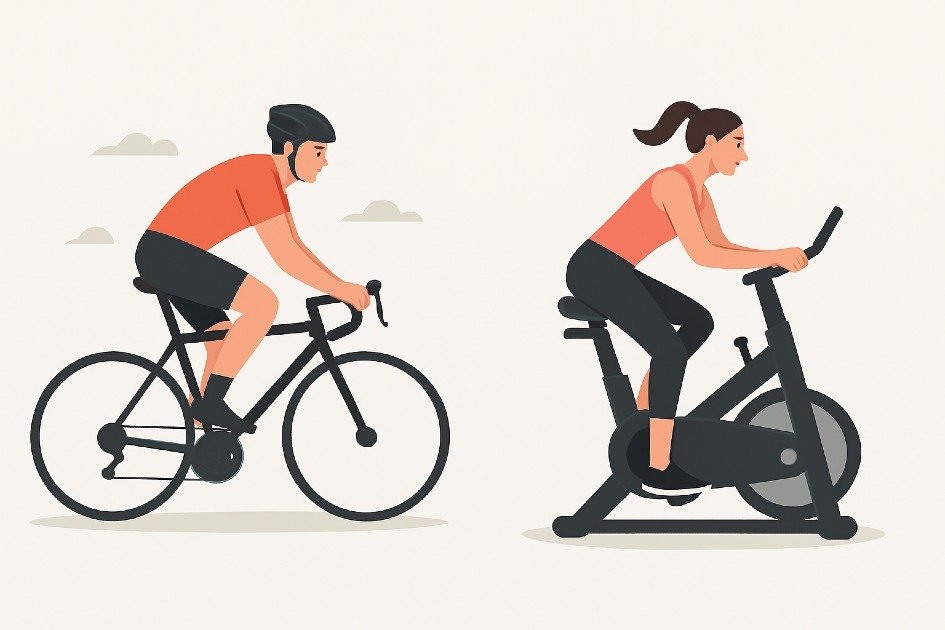
Cycling: From Road to Indoor Bikes
Cycling is a versatile cardio workout that strengthens legs, boosts heart health, and elevates mood, making it an ideal choice for both outdoor and indoor cycling.
Road Cycling: Explore, Endure, and Energize
Why it matters:
Outdoor cycling offers fresh air, natural light, and varied terrain, improving mood, mental clarity, and muscle strength, while reducing boredom and promoting cardio workout adherence.
How to do it:
- Start small: Start with 15–20 minutes of walking on flat ground to build stamina.
- Gear up: Wear a good helmet, gloves, and bright clothing to stay safe.
- Plan your route: Pick quiet or scenic roads to keep cycling safe, fun, and easy to stick with.
- Use cadence wisely: Keep your pace between 70–90 pedal turns per minute to build endurance without straining your muscles.
- Track your progress: Track your ride with apps or a bike computer to check distance, speed, and heart rate.
I mix long, easy rides with short, fast bursts. This way, I build both endurance and speed, and my heart and legs get stronger.
Indoor Cycling: Controlled, Convenient, and Consistent
Why it matters:
Indoor cycling provides a controlled, weather-resistant, joint-friendly environment suitable for those with knee, ankle, or hip sensitivities, allowing precise control over resistance levels, pacing, and duration.
How to do it:
- Choose the right bike: Choose a stationary bike you can adjust to match your height and body.
- Warm up properly: Pedal lightly for 5–10 minutes at low resistance to warm up and avoid injury.
- Structured intervals: Switch between 1–2 minutes of hard effort and 2–3 minutes of steady effort.
- Maintain posture: Stand tall, bend elbows a little and tighten your core for best results.
- Stay entertained: Stay motivated with music, guided classes, or [online cycling platforms RED].
I set weekly goals for my cardio, either by distance or time. Even a quick 20-minute session counts and keeps my heart strong.
Transitioning Between Road and Indoor Cycling
Why it matters:
Switching between road and indoor cycling prevents plateaus, engages muscles differently, keeps cardio workouts interesting, avoids mental fatigue, enhances adherence, and improves balance, coordination, and leg strength.
How to do it:
- Plan your week: Do 2–3 rides outside and 2–3 sessions indoors each week.
- Adjust intensity: Turn up the resistance indoors to copy the challenge of outdoor hills and sprints.
- Crosstrain: Do simple strength or core exercises to boost your cycling power.
- Listen to your body: Take a break or ride indoors at low intensity if your joints or muscles feel tired.
I stay flexible with my rides. When it rains, I hop on my indoor bike; when the sun shines, I hit the road. This keeps cycling a steady part of my cardio routine.
Nutrition and Hydration for Cyclists
Why it matters:
Fuel is essential for endurance, recovery, and performance in cycling, while hydration prevents fatigue, dizziness, and cramping, which can disrupt cardio workouts.
How to do it:
- Pre-ride: Have a small snack with carbs and protein 30–60 minutes before your ride.
- During ride: Sip water every 15–20 minutes. For rides over an hour, include electrolytes to stay energized.
- Post-ride: Refuel with protein-packed meals or shakes to rebuild muscles.
- Monitor energy: Monitor how your body reacts to foods to boost your energy and performance.
I keep a water bottle close during indoor rides and use a hydration pack for longer outdoor sessions.
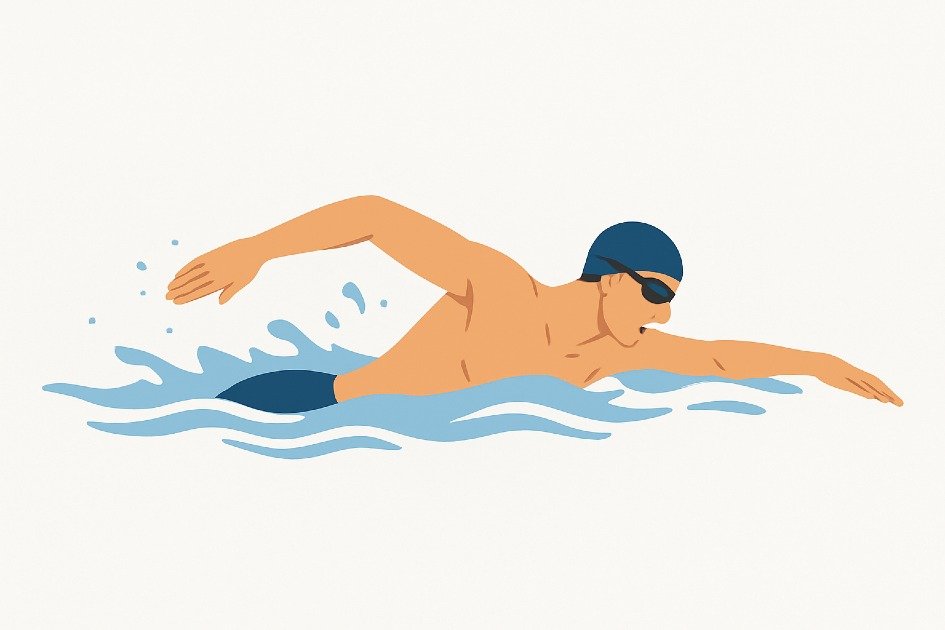
Swimming: A Full-Body Cardio Powerhouse
Swimming is a dynamic cardio workout that engages all body muscles, combining resistance, endurance, and cardiovascular training without joint stress, making it a crucial part of your fitness routine.
Why Swimming Strengthens Every Muscle
Why it matters:
Swimming exercises muscles in arms, legs, back, and core, builds strength without heavy weights, improves posture, and reduces daily injury risk.
How to do it:
- Try freestyle (front crawl) to work your whole body.
- Use steady, controlled strokes—quality matters more than speed.
- Kick with your core tight to build stronger abdominal muscles and lower back.
I use a kickboard to work my legs hard while letting my arms rest a bit.
The Calorie-Burning Potential of Different Strokes
Why it matters:
Swimming is a high-calorie cardio workout effective for weight management, targeting different muscles and preventing plateaus. Mixing strokes keeps workouts mentally engaging and reduces boredom.
How to do it:
- Mix freestyle, backstroke, and breaststroke in one swim session.
- Count your laps or wear a waterproof tracker to monitor effort and progress.
- Do interval swimming: sprint one lap, then swim a slow lap to recover.
I use butterfly strokes carefully—they burn tons of calories, but they are intense and tough when I am just starting.
Swimming Workouts for Endurance and Recovery
Why it matters:
Swimming enhances cardiovascular endurance, reduces impact for recovery after workouts, and increases stamina for daily activities due to its water buoyancy.
How to do it:
- Start with 20–30 minutes of steady swimming and add more time as your stamina grows.
- Add sculling drills—move your hands in a figure-eight—to build key stabilizing muscles.
- Finish with an easy, slow swim to help your muscles recover and reduce soreness.
I stretch by the pool after my swim to stay flexible and ease muscle tightness.
Incorporating Swimming into Your Weekly Routine
Why it matters:
Swimming can be transformed into a powerful cardio workout habit through consistency, preventing overtraining and promoting balanced muscle development, and incorporating it alongside other workouts can enhance fitness and longevity.
How to do it:
- Swim 2–3 times a week and alternate with running or cycling for a full-body cardio boost.
- Begin with 15–20 minutes, then slowly work up to 45–60 minutes.
- Combine skill drills with endurance swims to boost technique and burn calories.
I joined a local swimming group or follow online swimming classes to stay motivated and train with structure.
Tools and Accessories to Enhance Swimming Workouts
Why it matters:
The use of appropriate equipment enhances performance and targets specific muscles, reduces fatigue, improves technique, and enhances workout enjoyment.
How to do it:
- Boost Leg Strength and Stability with Kickboards.
- Boost Arm Endurance with Pull Buoys.
- Fins boost your swimming speed while strengthening ankle flexibility.
- Waterproof headphones let you enjoy guided swim workouts or motivating music without getting wet.
I invest in quality goggles and swim caps to stay comfortable, cut drag, and focus on my swim. I also use top-notch kickboards and pull buoys to boost every workout.
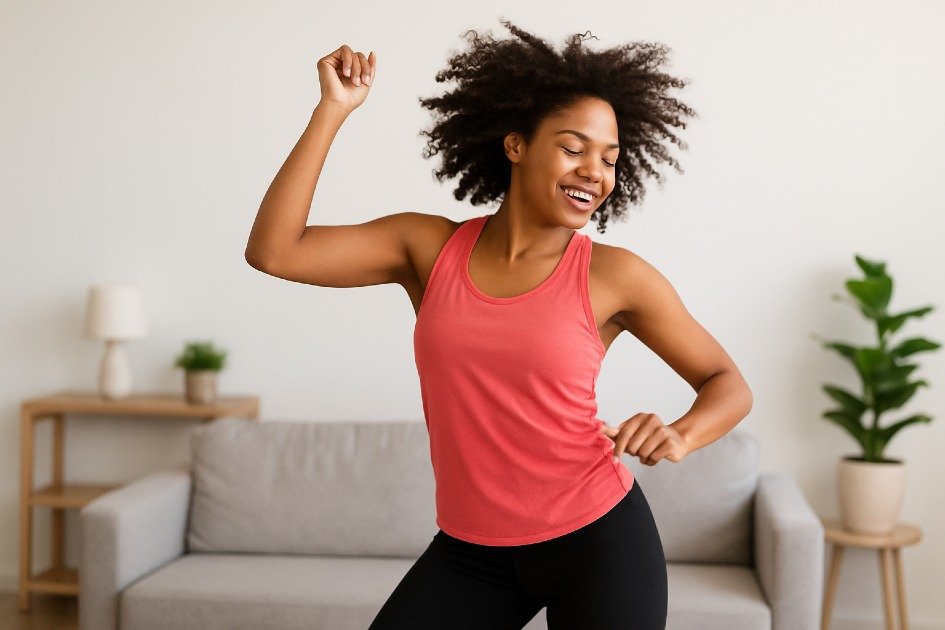
Dance Workouts: Turning Cardio into Fun
Dance workouts enhance heart health, burn calories, and improve coordination, making exercise enjoyable and motivating, making it a fantastic addition to any routine.
Why Dance Workouts Matter for Cardio and Health
Why it matters:
Dance workouts improve cardiovascular endurance, strength, balance, flexibility, release endorphins, reduce stress, and enhance mood, while providing a social or solo experience.
How to do it effectively:
- Pick a dance style you love—Zumba, hip-hop, salsa, or contemporary.
- Begin with 20–30 minutes each session and slowly raise the intensity.
- Move with steady rhythm, not perfect form.
- Do gentle stretches first to protect your muscles and prevent injuries.
I add quick bursts of intense moves to make my cardio workouts fun and effective.
Zumba: Party Your Way to Fitness
Why it matters:
Zumba, a beginner-friendly dance party, incorporates Latin-inspired dance with upbeat music, enhancing agility, coordination, and stamina through fast-paced, full-body workouts.
How to do it:
- Try a 30–45-minute Zumba class online or at a studio to burn calories, boost energy, and have fun while dancing.
- Move your arms, core, and legs together coordinated.
- Speed up gradually to push your heart and lungs.
- Listen to lively playlists to stay energized and focused.
I love using Zumba at-home kits—they let me dance and stay fit without leaving my living room.
Hip-Hop Dance: High-Impact Moves for Heart Health
Why it matters:
Hip-hop exercises, featuring high-intensity, explosive moves, enhance cardiovascular strength, body awareness, coordination, and muscular endurance, while fast transitions mimic interval-style cardio workouts, boosting calorie burn.
How to do it:
- Start with beginner hip-hop lessons to master the basic moves.
- Do quick, repeated moves to keep your heart rate up.
- Slowly make your movements longer and more challenging.
- Watch yourself in a mirror to keep your form correct and prevent injuries.
I switch between fast hip-hop moves and slower steps to get a fun, HIIT-style cardio workout.
Dance Fitness at Home: Easy, Engaging, and Flexible
Why it matters:
Home workouts offer flexibility, convenience, and improved cardiovascular endurance by incorporating simple dance moves into daily routines, eliminating intimidation and encouraging consistency.
How to do it:
- Spend 15–30 minutes daily on home dance workouts to boost fitness and mood.
- Work out in your living room or any small, safe space with non-slip flooring.
- Mix squats and lunges with dance moves for a full-body cardio boost.
- Use apps or online tools to track your progress and stay accountable.
How to Be Maximizing Your Dance Cardio Workouts
Why it matters:
Optimizing dance workouts provides significant cardiovascular benefits, prevents plateaus, maintains high energy levels, and enhances physical and mental engagement, making them sustainable for long-term use.
How to do it:
- Do 5–10 minutes of dynamic stretches to warm up before dancing.
- Dance in unique styles each week to work all your muscles.
- Drink water before, during, and after your workout to stay strong and perform your best.
- Stretch lightly after exercise to speed recovery and reduce soreness.
I turn my workouts into fun dance sessions to boost my heart health, stamina, and fitness. I start with 15 minutes a day or join weekly dance classes for lasting results.

High-Intensity Interval Training: Maximum Results in Less Time
HIIT, a fitness method that alternates intense workouts with short recovery periods, significantly enhances cardiovascular fitness, endurance, and metabolism, offering practical and time-saving benefits.
Why HIIT Works: The Science Behind the Burn
Why it matters:
HIIT boosts calorie burn post-workouts, increases cardiovascular efficiency, and is time-efficient, achieving 20-30 minutes of workout in 20-30 minutes, compared to traditional cardio workouts.
How to do it:
- Warm up for 5 minutes using light cardio or dynamic stretches to boost blood flow and prepare your muscles.
- Do 30–60 seconds of intense moves like sprints, jump squats, or burpees, then recover for 60–90 seconds with walking or light jogging.
- Do 6–10 rounds based on your fitness.
- End your workout with 5 minutes of easy walking or gentle stretches to relax your muscles.
Choosing the Right Exercises for Maximum Impact
Why it matters:
Selecting suitable exercises ensures multiple muscle groups are engaged, burns more calories, and minimizes injury risk.
How to do it:
- Boost leg strength and power with lunges, jump squats, and sprints.
- Add push-ups, mountain climbers, or battle ropes to work your upper body and boost full-body cardio.
- Do core moves like plank jacks and bicycle crunches to strengthen your posture.
Adjusting Intensity for Your Fitness Level
Why it matters:
HIIT can be intense, but overdoing it can lead to burnout or injury, so it is crucial to maintain proper intensity for sustainable progress.
How to do it:
- Beginners: Do 20–30 second bursts, then rest 60–90 seconds.
- Intermediate: Go all out for 40–50 seconds, then rest 45–60 seconds.
- Advanced: Push hard for 60–90 seconds, then rest 30–45 seconds.
- Keep your heart rate at 80–90% of its max during intense bursts.
Timing and Frequency for Optimal Results
Why it matters:
HIIT too often strains your body, too little limits results. Balance is crucial.
How to do it:
- Try 2–4 HIIT sessions each week, with at least one day for rest or easy cardio.
- Do light cardio on rest days to boost recovery.
- Plan sessions for when your energy peaks, usually in the morning or early afternoon.
Combining HIIT with Nutrition for Maximum Energy
Why it matters:
Good nutrition boosts energy, speeds recovery, and melts fat. HIIT alone will not do it.
How to do it:
- Have a small snack 30–60 minutes before your workout, like a banana with peanut butter or a mini yogurt parfait.
- Drink water or an electrolyte drink to stay hydrated during your workout.
- Eat protein and complex carbs after your workout to help muscles recover, like chicken with quinoa and veggies.
Overcoming Common HIIT Challenges
Why it matters:
People often avoid HIIT because it feels tiring, boring, or risky. Facing these challenges helps you stick with it and see results.
How to do it:
- Fatigue: Shorten your intense bursts or add more rest over time.
- Boredom: Try new exercises every session, and boost fun with music or a workout partner.
- Injury risk: Always use correct form, warm up first, and land on soft surfaces when you jump or sprint.
Incorporating HIIT Into Your Daily Routine
Why it matters:
Daily cardio builds lasting habits. Small steps add up to big health results.
How to do it:
- Do quick 15-minute HIIT workouts at home on busy days.
- Try stairs, a park trail, or even chairs at home for simple, effective workouts.
- Use a fitness app or journal to log your workouts and keep your motivation high.
I boost my home HIIT workouts with resistance bands and jump ropes—they are my go-to gear for fast results.
Recap: Boost Your Health with Cardio Workouts
Cardio workouts are not just exercises, but they also celebrate the body’s ability to achieve physical goals. They build resilience, endurance, and a stronger heart, allowing you to carry life with energy and vitality.
Proper nutrition, hydration, and rest are essential for unlocking the full potential of these workouts.
Integrating cardio workouts into your weekly routine can transform wellness into a lifestyle. These workouts not only improve your physical health but also enhance your mental and emotional well-being.
Consistent cardio workouts, celebrating small wins, and exploring new challenges not only enhance fitness but also create a life feeling energized, strong, and unstoppable.
Frequently Asked Questions
Is cardio alone enough for weight loss?
Cardio workouts are not the only way to burn fat; resistance training, a balanced diet, and strength-building routines can also enhance fat loss while preserving lean muscle.
What is the best cardio workout for beginners?
Beginners can start with low-impact cardio workouts like brisk walking, elliptical training, or stationary cycling, and beginner-friendly HIIT sessions for gradual heart rate elevation and joint adaptation.
How long should a cardio session last?
The duration of cardio workouts depends on intensity and fitness goals, with moderate-intensity sessions lasting 30-60 minutes and high-intensity interval training lasting 15-20 minutes.
Can too much cardio be harmful?
Excessive aerobic activity can cause overtraining syndrome, fatigue, and increased injury risk. To avoid burnout, mix cardio with strength training, mobility exercises, and adequate rest.
When is the ideal time to do cardio for best results?
The ideal cardio workout time depends on individual circadian rhythms and lifestyle. Morning sessions boost metabolism and mental clarity, while afternoon or evening workouts provide peak performance.
How can I make cardio workouts more engaging?
Mixing low-impact, high-intensity, and recreational activities, listening to curated playlists, and using gamified cardio apps can enhance motivation and make workouts more enjoyable.
Do cardio workouts help with mental health?
Regular aerobic activity, cardio workouts, short bursts of activity, and meditation can significantly improve mood, reduce stress, enhance neuroplasticity, and enhance cognitive function and memory retention.
How often should I change my cardio routine?
Vary cardio workouts every 4-6 weeks, introduce new exercises, alternate intensity levels, and shift durations. Crosstrain with swimming, cycling, running, and dance for cardiovascular challenge and prevent overuse injuries.
Can I combine cardio workouts with strength training on the same day?
Timing is crucial for effective strength training, with cardio before and after strength work optimizing muscle gains and calorie burning. Alternating sessions and using high-quality equipment can create a versatile home setup.
Are there specific cardio workouts for longevity?
Aerobic workouts like swimming, rowing, and cycling are linked to cardiovascular longevity and improved metabolic health. Combining these with high-intensity intervals enhances VO₂ max, insulin sensitivity, and mitochondrial function.

